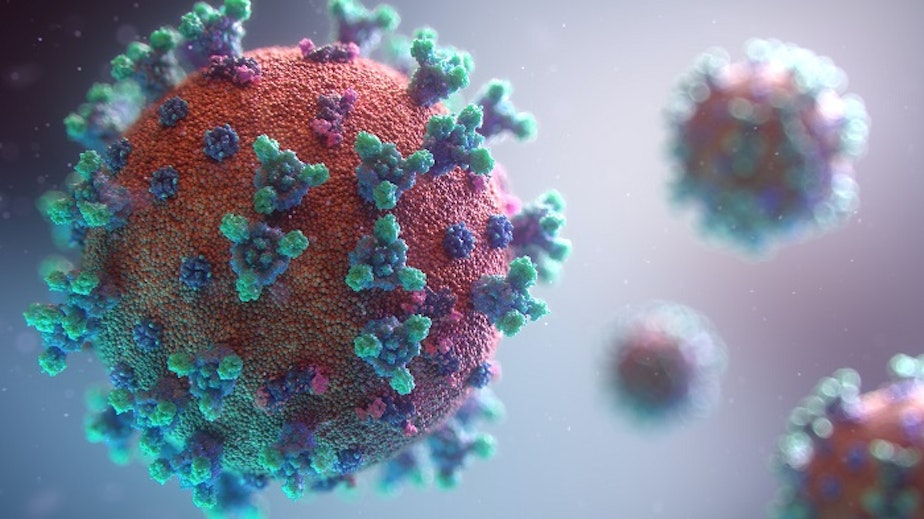He treated the first pandemic patient in the U.S. Here's what he's seen since then

When the novel coronavirus made it to the United States, it was first confirmed as a single case in Everett.
Dr. George Diaz was the physician who treated that patient and got the first glimpse at the pandemic that was about to sweep across the state, and nation.
With more than 100,000 confirmed cases of Covid-19 in Washington state, and after months of lockdowns and lifestyle changes, that single case seems like a lifetime ago. But it's a moment that Diaz remembers very well.
“The patient, when he arrived, was worried,” Diaz said. “He had been traveling to Wuhan and he was very familiar with what was happening there. We asked him to be isolated for quite some time — a lot of testing, etc. He was always a model patient for us in that regard, but yes he was very worried when he arrived.”
Diaz is an infectious disease expert at Providence Medical Center in Everett, where that first patient was being treated. But even before that, the hospital was training for a potential pandemic, stocking up on personal protective equipment, and running pandemic drills.
When the call came from the local health department about a potential Covid-19 case, Diaz felt a mix of confidence and concern.
At first, the patient was relatively stable. The treatment was initially to observe him, provide fluids, and manage bouts of nausea. Measures were being taken to limit exposure — the patient was only seen in person by nursing staff, and everyone else was working with him virtually.
But things changed after a few days. The patient developed a fever and pneumonia; he had shortness of breath. His oxygen levels declined and he required supplemental oxygen.
Doctors prescribed remdesivir, an antiviral drug that has been studied for use on Covid-19 patients since very early on in the pandemic. Though it wasn’t until this week — after three clinical studies concluded — that the Food and Drug Administration approved it as an official Covid-19 treatment.
The patient in Everett responded quite quickly to the treatment. After five days on remdesivir, the patient was well enough to go home. From there, he was isolated and observed.
Fortunate and disappointing
Since the success of that first case, Diaz has watched the pandemic progress outside the confines of his hospital. He said he now feels a mixture of relief and disappointment.
For starters, the messaging around the pandemic has been fairly consistent in Washington state, from local health departments to the governor’s office. But that isn't true across the board.
“Unfortunately, there is not complete uniformity across the country about what public health has to say, what science has to say,” Diaz said.
“And the messaging from the federal government has not always been in line with public health. I think this has led to a substantial portion of our population to not believe the science, not to believe in public health, and not to do things we know will help.
“That part of the pandemic response has been disappointing," Diaz continued. "We know that in areas where they are not applying public health measures, the cases are rising, their rates of hospitalization are higher, their bed capacity is worsening.”
Washington state is currently experiencing a surge in new Covid-19 cases. It’s been an expected wave of the pandemic. The fall season brings colder, rainier weather, prompting people to be indoors more with increasing contact.
As of October 23, Snohomish County (where Diaz treated that first patient) has 100 cases per 100,000 people. It's the second highest count since March. The state aims to have counties at 25 cases per 100,000, or below.
Diaz now worries that the messaging about the pandemic is not reaching all communities, which could further drive the surge.
“There are still pockets of communities that are not fully in compliance with what public health is recommending for one reason or another,” Diaz said.
"Within the Hispanic community, we know from CDC data that Hispanic people are being hospitalized and dying at higher rates. Part of that, I think, is that when Hispanic patients arrive, they tend to be sicker. It seems to be the result of delayed care. We encourage that population to seek care earlier.
"If we can get them plugged into virtual care, telehealth, we can get treatments earlier, we can try to prevent spread in that community and that hopefully will be a focus as we go forward to address disparities in outcomes of this pandemic.”


